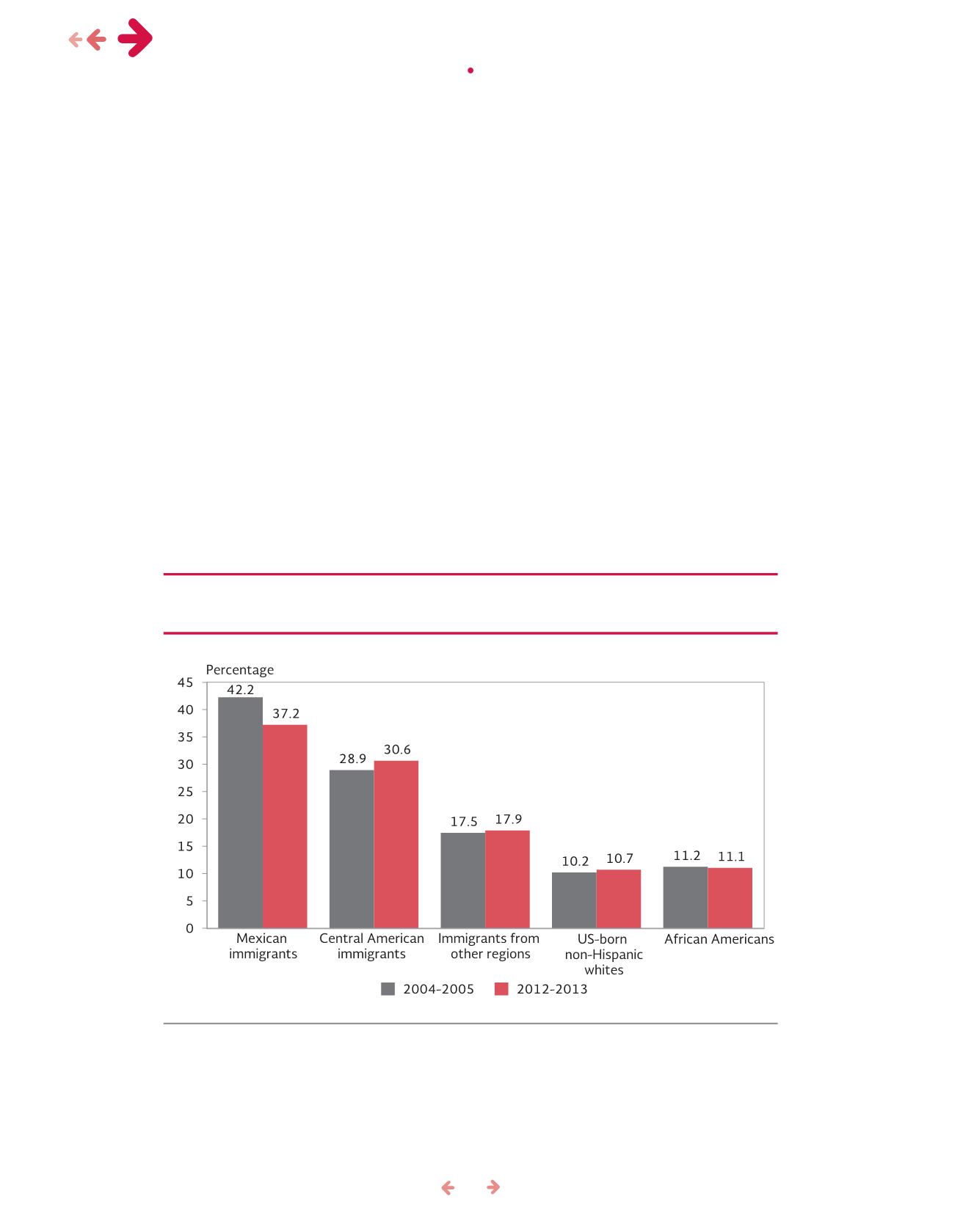
36
Useofhealth services
Mexican immigrants frequentlyhaveno
usual sourceof health care
The data presented in the previous section show that
Mexican immigrants in the United States, followed by
Central Americans, weremore vulnerable and less pro-
tected in termsof health insurance, a situation thathas
not improved significantly in the past decade. Health
insuranceenablespeople toaccesshealthcaremore re-
gularlyand inamore timelymanner.On theotherhand,
the lackofcoverageamonga largesegmentof the low-
incomepopulation isthemainobstacleto regularhealth
care. Inaddition tofinancial barriers, thereareadditional
cultural, linguistic and legal difficulties in obtaining ac-
cess tomedical care for immigrantpopulations.
It is crucial to have a usual source of care to
ensure consistent check-ups, to prevent illness and
for the timely diagnosis and treatment in the event
of illness or emergency. Compared to other groups,
Mexican immigrants are much less likely to have
a usual source of health care in the United States,
which stems directly from their lower health insurance
coverage, amongother factors.Though theproportion
of Mexicans without a usual place for health care de-
creased from42% to37% between2004 and2013,
thisfigure is still higher than thatofCentral Americans
(31%), twiceashighas thatof immigrants fromother
regions (18%) and three times as highas that of non-
HispanicUS-bornwhites andAfricanAmericans (11%
inboth cases) (Figure21).
Source: Migration Policy Bureau, SEGOB, based on U.S. State Health Access Data Assistance Center,
National
Health Interview
Survey (NHIS), 2004-2005 and 2012-2013. Integrated Health Interview Series. Minneapolis:
UniversityofMinnesota.
Figure21. PopulationofUnitedStateswithout regular sourceof care,
by regionof originandethnicityor race, 2004-2005and2012-2013
migration & health •
mexican immigrants in the us: a 10 year perspective


